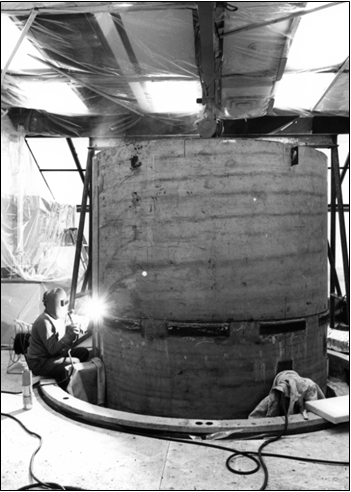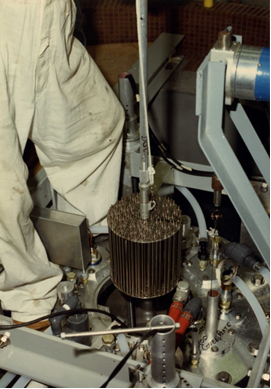SLOWPOKE
The Safe LOW POwer (K)Critical Experiment, or SLOWPOKE, reactor was first developed at Chalk River Nuclear Laboratories in Deep River, ON (3.5 h north of Kingston) in the 1960s. The first design, SLOWPOKE-1, was bought by the University of Toronto in 1971 to keep up with research demand for neutron production. It produced more neutrons than the conventionally-used small accelerators giving UofT an advantage in advancing neutron science.
SLOWPOKE-2 design followed shortly thereafter as a larger, improved version of the SLOWPOKE-1. The upgraded design had the highest ratio of neutron production to fission power of any research reactor at the time. Furthermore, the updated model had 10 sample sites, over just one with the SLOWPOKE-1.
The SLOWPOKE-2 was small enough and inexpensive enough to make it accessible for universities and research centres. The efficient design allowed experiments to be performed at a fraction of the cost of competing models. Ultimately, a SLOWPOKE-2 reactor would be acquired by eight different institutions, seven in Canada and one in Jamaica.
RMC SLOWPOKE-2 Facility History
The RMC was the last of eight institutions to receive a SLOWPOKE-2 research reactor and the first to be operated with LEU. Dr. R. F. Mann and Dr. L. G. I. Bennett, professors in the Department of Chemistry and Chemical Engineering, oversaw its acquisition and installation.
Pre-planning for the SLOWPOKE-2 Facility began in 1976 when the Sawyer Science and Engineering Building was undergoing construction. A concrete pit 6 metres deep and 2.5 metres in diameter was constructed into the floor of the new building; within six years a stainless steel liner was added to ensure a complete waterproof seal. In August 1985, the LEU reactor fuel and beryllium reflectors were received at a cost of $200,000. The reactor went critical in September of 1985. The second floor of the Facility was allocated for nuclear laboratories which is where most of the day-to-day sample analysis still occurs.
In the early 1990’s, a neutron beam tube was added which could be used to take images of samples with the directed neutrons in a process called neutron radiography. Its initial instalment used film to detect neutrons and later in 1990s a CCD camera was installed to improve the picture resolution. In 2010s, a rotating stage was used to add neutron tomography capabilities.
Control software of the original SLOWPOKE-2 was an analog system. It was replaced in 2001 by a digital system called the SLOWPOKE Integrated Reactor Control and Instrumentation System (SIRCIS). It was implemented using LabVIEW® professional development software. SIRCIS increased the functionality of the original analog system and improved the overall user interaction by using a click-and-point computer interface. The SLOWPOKE-2 nuclear reactor remains the only type of nuclear reactor licensed in Canada for unattended operation in automatic mode.
SLOWPOKE-2 was refueled in Sept 2021 after 36 years of operation.

